East Texas African American Oral Histories
During the summer of 2010 the African American Heritage Project of Nacogdoches (AAHP) graciously and excitingly agreed to work with the Center for Regional Heritage Research and graduate students enrolled in an SFA Public History graduate seminar on oral history taught by Dr. Paul J. P. Sandul by providing interviewees. The same occured in Lufkin during the summer of 2012 thanks to the help of community leader Reverend Bettie Kennedy. Despite impressive efforts by AAHP and other local throughout East Texas before, not to mention other local history organizations like the East Texas Research Center, much more was, and is still, needed regarding African American history in East Texas. All groups have expressed and continue to express lament over the current dearth of information. Unsurprisingly, then, gropus such as AAHP and leaders in Lufkin like Rev. Kennedy have actively supported the collection of oral histories and are collaborative partners. These project complement efforts by the AAHP and other organizations to gather new information and materials, as well as to identify and preserve resources important to African American organizations and residents in East Texas. Because African Americans, their resources, and their history have been, and is, largely underrepresented in Deep East Texas, class oral history projects help, if only in a small way, to correct that. Moreover, these oral histories represents a unique opportunity for oral testimony to play a role in fostering a broader community identity for the East Texas African American community in general, African American organizations specifically, and for all East Texas residents regardless of race. Oral history, as many historians have claimed, can thus be a device of cohesion in East Texas.
If you would like to help, participate, or otherwise support any on-going efforts to record the unique and rich stories of African American history in East Texas, please feel free to contact Dr. Sandul at sandulpj@sfasu.edu.
The original recordings for all the interviews and full transcripts are held by the East Texas Research Center, R. W. Steen Library, Stephen F. Austin State University, Nacogdoches, Texas. Copies of the recordings and transcripts are also deposited with the Nacogdoches African American Heritage Project. All copy rights in all the transcripts and audio files, including the right to publish, are reserved to the East Texas Research Center, R. W. Steen Library, Stephen F. Austin State University, Nacogdoches, Texas. Excerpts up to 1000 words from the interviews may be quoted for publication without seeking permission as long as the use is non-commercial and properly cited. Requests for permission to quote for other publication should be addressed to:
East Texas Research Center – R. W. Steen Library
Stephen F. Austin State University
1936 North St.
Nacogdoches, TX
75962
Their online form can be found at here.
Nacogdoches List of Interviews:
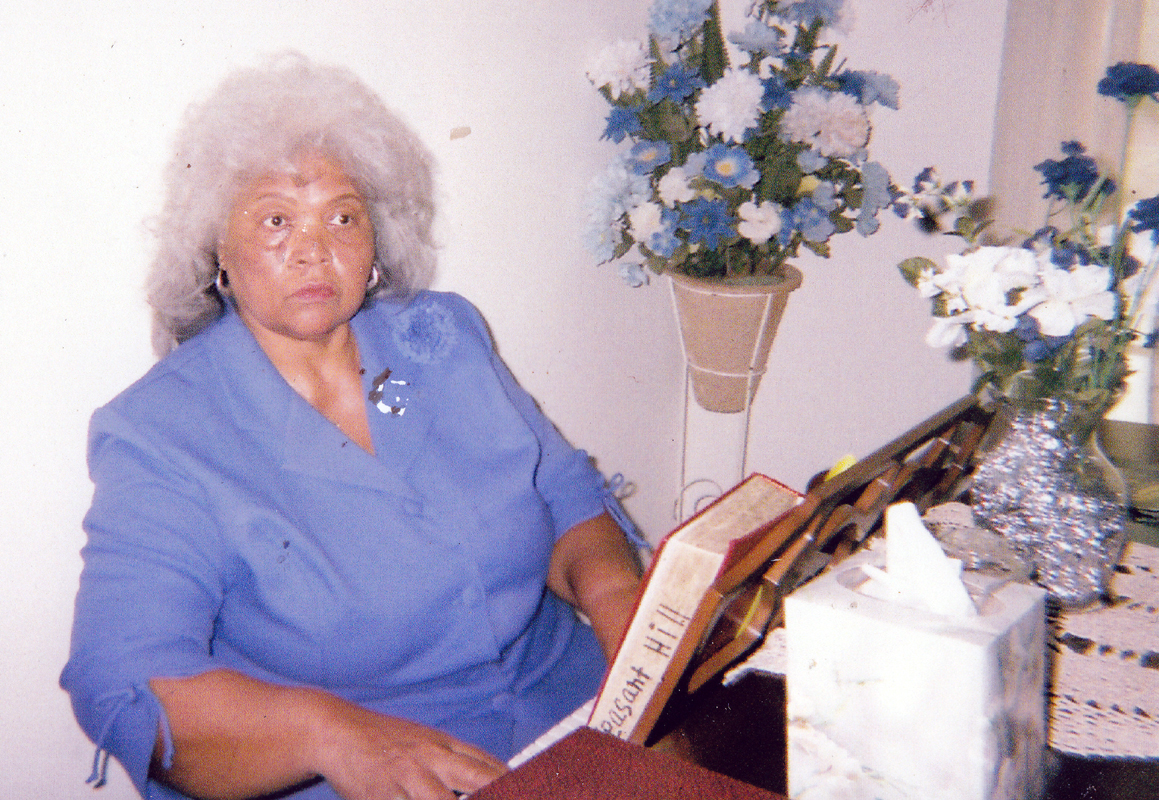
Maye Ham was born in 1942 in the County Line Community of Douglass, Texas. She attended local community schools before attending Prairie View A&M University for two years. She moved to California and graduated from California State University. She taught English for Compton Unified School District in California and Nacogdoches Independent School District for more than thirty-two years. Now she serves as an adjunct professor at Angelina College in Lufkin, Texas. Ham also serves as chair of the African American Heritage Project (AAHP).
Subject Guide for Maye Ham Interview (in order of discussion): Introduction and family background; History of move to California; Early life and family life; Differences between living East Texas and Southern California; Moving back to East Texas; Positives of living in smaller community; Personal experiences concerning segregation; Description of County Line Community; Changes in parental involvement in school; Changing sense of community; Personal education history; College experiences; Sibling’s education; Graduate education; Opportunities for the Black males; How segregation changed family dynamics; Benefits of desegregation; Negative effects of desegregation; Opportunities for the Black males; Church and community; County Line Community; Leaders of County Line Community Uniqueness of County Line Community; Edward Monel Upshaw; Memories of Cushing High School; Leota Freeman Upshaw; Church community today; The next generation’s role in the community; Race relations in present-day [2010] Nacogdoches; Closing of interview.
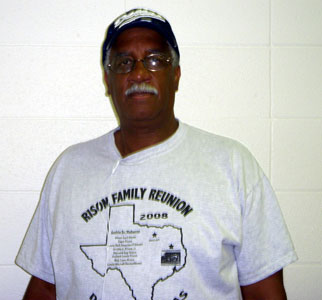
Rison graduated from E. J. Campbell High School in Nacogdoches in 1966 and graduated with a degree in sociology in 1971 from Stephen F. Austin State University. Rison then went to work at a school for the emotionally disturbed in Victoria for two and half years before taking a job at the chemical plant for DuPont for thirty one years. Rison has been married forty years, has kids, and grandchildren. He is currently working on research on genealogy for African American cemeteries in the Nacogdoches area.
Subject Guide for Archie Rison, Jr. (in order of discussion): Schooling and Job; African American Community; Missing out on integration and Football; Segregation and Character Building; School integration; Father and School integration; Education; College; Shawnee St and genealogy and Athletics; Protests; Arrest of college student; Possibility of Violence; Abraham Lincoln and abolitionists; Difference between East Texas and the South; Violence form the African American Community; Klan; Hispanics; Father; Father integrates cafeteria at Southland Paper Mill; Typical Saturday in the community; Negro League Sports; Friendships; Integration affects Rison; Successful Integration; Nacogdoches Police, Chief of Police Roebuck, and Sheriff Owens.
Patrick Sanders was born in 1972 or 1973 in Lufkin, Texas to Guy J. and Robbie R. McKind Sanders. His mother and father moved to Nacogdoches soon after his birth to live among his father’s family in the Burgess Hill community. Sanders attended elementary school at Nettie MarshallElementary School, junior high at Thomas J. Rusk Middle School and high school at Nacogdoches High School. He earned a degree in social work from Stephen F. Austin State University in 1991. Sanders is currently employed at the Greater East Texas Community Action Program (GETCAP) Head Start inNacogdoches, Texas as the Social Services Specialist where he began work as an intern while at SFASU and continued to work after receiving his degree.
Subject Guide for Patrick Sanders Interview (by order of discussion): Biographical background; Community while growing up; Community leaders; Educational background; Work background; Participation in organizations, celebrations and the importance of those events; Integration, Washateria; Father’s family background; Integration, MLK, Jr. as an important figure; Lack of Racism in school; Activities while in school; Charlotte Stokes as his mentor; Goals as a social worker; Influence of familial community; Separation of races in town, problems with moving out of community; People in his life; Work ethic and its influence on a family; Work with AAHP; Nacogdoches Progressive Leadership Group; Churches in the community-presence and influence; Desegregation and the current community; Work in community, desire to unify community members; Segregation in lower South in late 1970s, early 1980s; Races coexist in Nacogdoches.
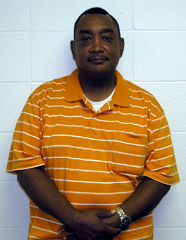 Gary Roberts born in 1963, grew up in the Burgess Hill community where his aunt, Marie Christopher, and her husband raised him. He graduated from Nacogdoches High School in 1981 where he succeeded as a musician and artist. Roberts is currently working on several projects with his church and community while balancing a job and family.
Gary Roberts born in 1963, grew up in the Burgess Hill community where his aunt, Marie Christopher, and her husband raised him. He graduated from Nacogdoches High School in 1981 where he succeeded as a musician and artist. Roberts is currently working on several projects with his church and community while balancing a job and family.
Subject Guide for Gary Roberts Interview (in order of discussion):Neighborhood before integration; School day before integration; Neighborhood after integration; Schooling; Arts (painting and bass guitar); Traveling band: The Soul Revisionists; Nacogdoches traveling; Parent involvement; Early life; Middle school and high school; Job history; Family life; Nacogdoches and integration; The Bible discussion; Nacogdoches helping the African American community; Communities helping themselves; B. B. A. D. (Big Brothers Against Drugs); Other activities; Community involvement and arts; Art of Color.
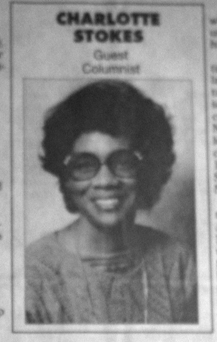 Charlotte Stokes was born in Nacogdoches, Texas in 1938. She is the daughter of Arthur Weaver – the president of the NAACP chapter in Nacogdoches for twenty years. In Stokes’s earlier years she grew up in Bremerton, Washington. In 1946 her family moved back to Nacogdoches where she attended E. J. Campbell School in Nacogdoches up to her twelfth year. Then she went to Jarvis ChristianCollege where she majored in home economics. During the sixties Stokes lived in Washington, D. C. where she worked as a eighth and ninth grade teacher at Woodson Junior High. Later she lived and taught in St. Louis, Missouri. By 1976 Stokes moved with her husband and son back to Nacogdoches. She continues to live in Nacogdoches with her husband and continues to visit with her father.
Charlotte Stokes was born in Nacogdoches, Texas in 1938. She is the daughter of Arthur Weaver – the president of the NAACP chapter in Nacogdoches for twenty years. In Stokes’s earlier years she grew up in Bremerton, Washington. In 1946 her family moved back to Nacogdoches where she attended E. J. Campbell School in Nacogdoches up to her twelfth year. Then she went to Jarvis ChristianCollege where she majored in home economics. During the sixties Stokes lived in Washington, D. C. where she worked as a eighth and ninth grade teacher at Woodson Junior High. Later she lived and taught in St. Louis, Missouri. By 1976 Stokes moved with her husband and son back to Nacogdoches. She continues to live in Nacogdoches with her husband and continues to visit with her father.
Subject Guide for Charlotte Stokes Interview (in order of discussion): Introduction and family background; Integration in Nacogdoches schools and community; Integration in Media and News; Father’s [Arthur Weaver] involvement in integration and NAACP; Segregation in schools and Nacogdoches; Involvement in Civil Rights Movements; Fear for father during integration and civil rights movements; Helena Abdullah: Fear for herself living in a segregated Nacogdoches; Home life during integration; Relationships with White families; Teaching in Washington, D.C.; Feelings about integration in Nacogdoches as of today [2010]; Resistance in Nacogdoches towards integration; Boycotting Nacogdoches; Lufkin integrated; Improvement of occupations for Blacks after integration; Civil Rights Movements in the media and news; Martin Luther King, Jr.’s involvement in integration; John F. Kennedy; Robert Kennedy (Bobby Kennedy); First Days in E. J. Campbell School (segregated); Civil Rights Marches in Nacogdoches; Mother’s involvement in integration; Affect of integration and father’s involvement affected her older brother, Charles; Charles Weaver’s occupation; The acceptance of Integration in Nacogdoches; Integration’s affect on Mrs. Stokes.
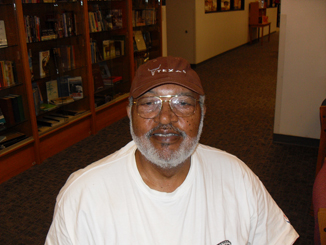 Marion Upshaw grew up in Douglas, Texas. He attended Black schools in Douglas and graduated salutatorian. He then went off to Texas College and earned a degree in biology in 1955. His degree, meant for teaching, led him to work in Douglas, Texas as a teacher in 1959. In 1965, he began teaching in Nacogdoches. He taught biology and math at E. J. Campbell High School. During the integration process, he was one of the first Black teachers to go over to the White school. He retired in 1992, after thirty-three years of teaching, at the age of fifty-nine.
Marion Upshaw grew up in Douglas, Texas. He attended Black schools in Douglas and graduated salutatorian. He then went off to Texas College and earned a degree in biology in 1955. His degree, meant for teaching, led him to work in Douglas, Texas as a teacher in 1959. In 1965, he began teaching in Nacogdoches. He taught biology and math at E. J. Campbell High School. During the integration process, he was one of the first Black teachers to go over to the White school. He retired in 1992, after thirty-three years of teaching, at the age of fifty-nine.
Subject Guide for Marion Upshaw Interview (in order of discussion): Early Life and Schooling; College Experience; Career Choice; Quality of Schools in Nacogdoches; African American Schools Compared to White Schools; Teachers and the African American Community; Jim Crow and Nacogdoches; How African Americans worked within the Nacogdoches Establishment; African American Reactions to White Actions After Brown; Teaching in White Schools; Bringing Integration to Fruition; White Reaction; Lunch at the High School (Teachers); Freedom of Choice; Student Reactions to Integration; Full Integration; Fate of E. J. Campbell School; Fate of Other African American Schools in East Texas; The Two Dragons of Nacogdoches; The Fate of African American Educators during Integration; White Students Reaction to African American Teachers; African American Students’ Education after Integration; Reflection on the Results of Integration and Social Commentary.
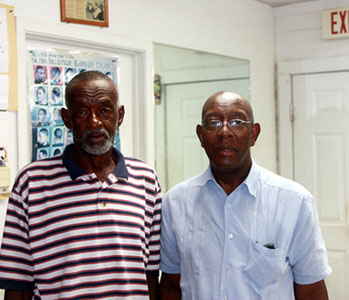
Taylor Whitaker was born on November 4th, 1943. He graduated from the segregated E. J. Campbell High School in 1962. Following graduation Whitaker went to work as a barber in Nacogdoches. As of 2010, Whitaker owned Whit’s Barbershop on Shawnee Street in Nacogdoches. The interview, conducted June 29, 2010 by Stephen Delear, occurred at Whit’s Barber Shop in Nacogdoches,Texas as some customers received haircuts from Whitaker. Several patrons and employees appear briefly, commenting on Whitaker’s interview or offering additional information.
Subject Guide for Taylor Whitaker Interview (in order of discussion): Date of birth, family information, entry into profession; Charlie Resino: first African American at SFA; Life in a segregated high school, integration, civil rights marches in Nacogdoches; Fear of Nacogdoches chief of police, police harassment; Closing of Nacogdoches lunch counters to avoid integration; Difficulty getting good jobs during segregation; Fear of losing employment of seen marching; Arrest of Charlie Resino for taking White woman to homecoming; Murder of the Polar [phonetic] boy, potentially racial-suspected police involvement; Life in the barbershop; Mickey McGuire and organizing civil rights marches; Importance of Juneteenth in the African American community; Importance of automobiles in the African American community; Police harassment of African American motorists; Politics in the African American Community; Role of Precinct 2 in Nacogdoches politics; Banking and home ownership in the African American community; Food availability and home gardens in the African American community; Role of African American Churches in community; The moon landing; Segregated lunch counters; The Klan in Nacogdoches; Fear among African American Staff Members at Stephen F. Austin of prison should they be accused of romantic involvement with a female White student; Current politics; Feeling in the African American community about demolition of the Temple Pool.
Subject Guide for Taylor Whitaker Interview (in order of discussion): Date of birth, family information, entry into profession; Charlie Resino: first African American at SFA; Life in a segregated high school, integration, civil rights marches in Nacogdoches; Fear of Nacogdoches chief of police, police harassment; Closing of Nacogdoches lunch counters to avoid integration; Difficulty getting good jobs during segregation; Fear of losing employment of seen marching; Arrest of Charlie Resino for taking White woman to homecoming; Murder of the Polar [phonetic] boy, potentially racial-suspected police involvement; Life in the barbershop; Mickey McGuire and organizing civil rights marches; Importance of Juneteenth in the African American community; Importance of automobiles in the African American community; Police harassment of African American motorists; Politics in the African American Community; Role of Precinct 2 in Nacogdoches politics; Banking and home ownership in the African American community; Food availability and home gardens in the African American community; Role of African American Churches in community; The moon landing; Segregated lunch counters; The Klan in Nacogdoches; Fear among African American Staff Members at Stephen F. Austin of prison should they be accused of romantic involvement with a female White student; Current politics; Feeling in the African American community about demolition of the Temple Pool. (Taylor Whitaker-right, Bernie Aikman Sr-left)
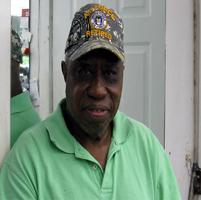
.jpg)
Taylor D. Whitaker was born and raised in Nacogdoches, Texas and graduated from E. J. Campbell High School in 1962. Whitaker is a forty-three year veteran barber and owner of Whit’s Barber Shop on Shawnee Road. M. L. Glenn was born and raised in Nacogdoches, Texas and graduated from E. J. Campbell High School in 1951. Glenn joined the Navy after graduation and traveled the world before returning to Nacogdoches in 1973. We have no biography of Lonnie Wells.
Subject Guide for Taylor D. Whitaker, M. L. Glenn, and Lonnie Wells Interview (in order of discussion):Introduction; Whitaker’s Background; Glenn’s Background and Nacogdoches in the 1940s and 1950s; Segregated Communities; Start of Integration; Chief of Police M. C. Roebuck and Local Law Enforcement; Mickey McGuire and Civil Rights Marches (1972); Jobs and Education in an Integrated Community; Integrations Affect on the African American Community; Local Government; Religion and the African American Community; 1970s Real Estate Scandal; Changing Communities; Closing E. J. Campbell School and Education Today [2010]; the Future of the Black Community.
Lufkin List of Interviews:
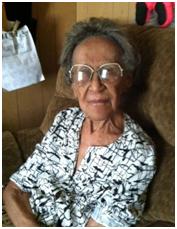 Bonner was born in 1915 in the Concord Community near Mount Enterprise, Texas. The third of ten children, she was in a farm family and went on graduate Concord School where she was known as an excellent basketball player. After graduation, Bonner attended Texas College in Tyler, Texas, where she also played basketball. She received a degree in education from Texas College and went on to teach mathematics and coach girls’ basketball.
Subject guide for Emma Boner Interview (approx. 45 minutes): Introduction and family background – early life in the Concord Community near Mount Enterprise – attending and graduating from Texas College – memories of coaching basketball in several Texas towns- integration of schools in Fairfield – recalling taking her young daughter on bus trips while coaching- marrying a preacher and describing how they managed togetherness in spite of their careers-not being re-hired as a coach after schools were integrated- visiting her oldest daughter in California – getting a call from white coach Hilton Farris to come teach math in Lufkin – details on how she came to Lufkin – how teaching at the integrated school was different -memories of her grandmother-how she met her first and second husbands – recollections of historical events -how desegregation affected the school employees in her family -remembering role models and influential people -reflecting on the biggest changes seen in her lifetime.
Bonner was born in 1915 in the Concord Community near Mount Enterprise, Texas. The third of ten children, she was in a farm family and went on graduate Concord School where she was known as an excellent basketball player. After graduation, Bonner attended Texas College in Tyler, Texas, where she also played basketball. She received a degree in education from Texas College and went on to teach mathematics and coach girls’ basketball.
Subject guide for Emma Boner Interview (approx. 45 minutes): Introduction and family background – early life in the Concord Community near Mount Enterprise – attending and graduating from Texas College – memories of coaching basketball in several Texas towns- integration of schools in Fairfield – recalling taking her young daughter on bus trips while coaching- marrying a preacher and describing how they managed togetherness in spite of their careers-not being re-hired as a coach after schools were integrated- visiting her oldest daughter in California – getting a call from white coach Hilton Farris to come teach math in Lufkin – details on how she came to Lufkin – how teaching at the integrated school was different -memories of her grandmother-how she met her first and second husbands – recollections of historical events -how desegregation affected the school employees in her family -remembering role models and influential people -reflecting on the biggest changes seen in her lifetime.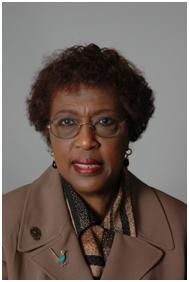 McKenzie is the Vice President and Dean of Instruction at Angelina College in Lufkin, Texas. She was born in Lufkin in 1940 and attended Lufkin’s Carver Elementary, Garrett Junior High, and Dunbar High School. She attended Prairie View A&M College and obtained her degree in nursing in 1963. Her first job after college was at Booker T. Washington High School, a segregated school located in Wichita Falls, where she was the school nurse and health instructor. After a stint in the Peace Corps, she received her Master’s degree in Public Health Nursing in 1968 and decided to return to Lufkin and eventually began her long career as a nursing instructor at Angelina College ·
Subject guide for Patricia McKenzie Interview (approx. 82 minutes): Introduction and family background – early life growing up in segregated Lufkin – memories of high school activities in Lufkin – involvement in University Interscholastic League (UIL) – growing up in the community and the role of church – expectations of being an African American – time spent at Prairie View A&M as a nursing student – first job out of college in Wichita Falls as a school nurse and health instructor – learning how to swim – experiences while in the Peace Corps in the Dominican Republic – some of the struggles encountered while a nurse in the Dominican Republic – importance of having an extended family when growing up – spending summers in South Texas with her grandmother when growing up – attending the University of Pittsburg for Master’s degree- about her ex-husband – balancing being a single parent, working at Angelina College and getting her Doctoral degree – proud of her daughter’s accomplishments – how she got into teaching nursing – passion for teaching – role models growing up – decision to become the Vice President of Angelina College – greatest achievements – death of family – pushing her students to be their best – service to the community.
McKenzie is the Vice President and Dean of Instruction at Angelina College in Lufkin, Texas. She was born in Lufkin in 1940 and attended Lufkin’s Carver Elementary, Garrett Junior High, and Dunbar High School. She attended Prairie View A&M College and obtained her degree in nursing in 1963. Her first job after college was at Booker T. Washington High School, a segregated school located in Wichita Falls, where she was the school nurse and health instructor. After a stint in the Peace Corps, she received her Master’s degree in Public Health Nursing in 1968 and decided to return to Lufkin and eventually began her long career as a nursing instructor at Angelina College ·
Subject guide for Patricia McKenzie Interview (approx. 82 minutes): Introduction and family background – early life growing up in segregated Lufkin – memories of high school activities in Lufkin – involvement in University Interscholastic League (UIL) – growing up in the community and the role of church – expectations of being an African American – time spent at Prairie View A&M as a nursing student – first job out of college in Wichita Falls as a school nurse and health instructor – learning how to swim – experiences while in the Peace Corps in the Dominican Republic – some of the struggles encountered while a nurse in the Dominican Republic – importance of having an extended family when growing up – spending summers in South Texas with her grandmother when growing up – attending the University of Pittsburg for Master’s degree- about her ex-husband – balancing being a single parent, working at Angelina College and getting her Doctoral degree – proud of her daughter’s accomplishments – how she got into teaching nursing – passion for teaching – role models growing up – decision to become the Vice President of Angelina College – greatest achievements – death of family – pushing her students to be their best – service to the community.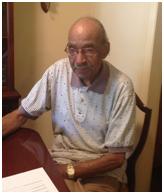 Rhodes was born in Nacogdoches County, Texas in 1932. He attended school in Winters Hill and later transferred to E. J. Campbell High School in Nacogdoches. He completed high school at Dunbar in Lufkin, graduating in 1950. He received an undergraduate degree in biology and physical education from Wiley College in Marshall, an MA at Texas Southern University in Houston and a doctorate in education from the University of Houston. He is a life-long educator, and, in 1968, he became the first African-American professor at Stephen F. Austin State University in Nacogdoches.
Subject guide for Odis Rhodes Interview (approx. 66 minutes): Date and place of birth – Winters Hill, Texas – John Sanders (step-grandfather) – agricultural practices – Grayland Baptist Church – Bennett Thomas “Bennie” Spradley – Scott’s Temple Church of the Living God in Christ – Douglass, Texas – rural racial segregation – revival meetings – Mize family - school segregation – E. J. Campbell High School – bussing – Dunbar High School – teacher training – black colleges – professions open to African Americans – dissuasion from law as a profession – Wiley College - early teaching experience – Waskom, Texas – school desegregation in Lufkin, Texas - Garrett Elementary School – Willie Ross – Elmer Redd – difficulty of finding school administrative position in Lufkin – first African-American professor at Stephen F. Austin State University – faculty reaction – student reaction – influence of African-American churches – NAACP – Texas identity.
Rhodes was born in Nacogdoches County, Texas in 1932. He attended school in Winters Hill and later transferred to E. J. Campbell High School in Nacogdoches. He completed high school at Dunbar in Lufkin, graduating in 1950. He received an undergraduate degree in biology and physical education from Wiley College in Marshall, an MA at Texas Southern University in Houston and a doctorate in education from the University of Houston. He is a life-long educator, and, in 1968, he became the first African-American professor at Stephen F. Austin State University in Nacogdoches.
Subject guide for Odis Rhodes Interview (approx. 66 minutes): Date and place of birth – Winters Hill, Texas – John Sanders (step-grandfather) – agricultural practices – Grayland Baptist Church – Bennett Thomas “Bennie” Spradley – Scott’s Temple Church of the Living God in Christ – Douglass, Texas – rural racial segregation – revival meetings – Mize family - school segregation – E. J. Campbell High School – bussing – Dunbar High School – teacher training – black colleges – professions open to African Americans – dissuasion from law as a profession – Wiley College - early teaching experience – Waskom, Texas – school desegregation in Lufkin, Texas - Garrett Elementary School – Willie Ross – Elmer Redd – difficulty of finding school administrative position in Lufkin – first African-American professor at Stephen F. Austin State University – faculty reaction – student reaction – influence of African-American churches – NAACP – Texas identity.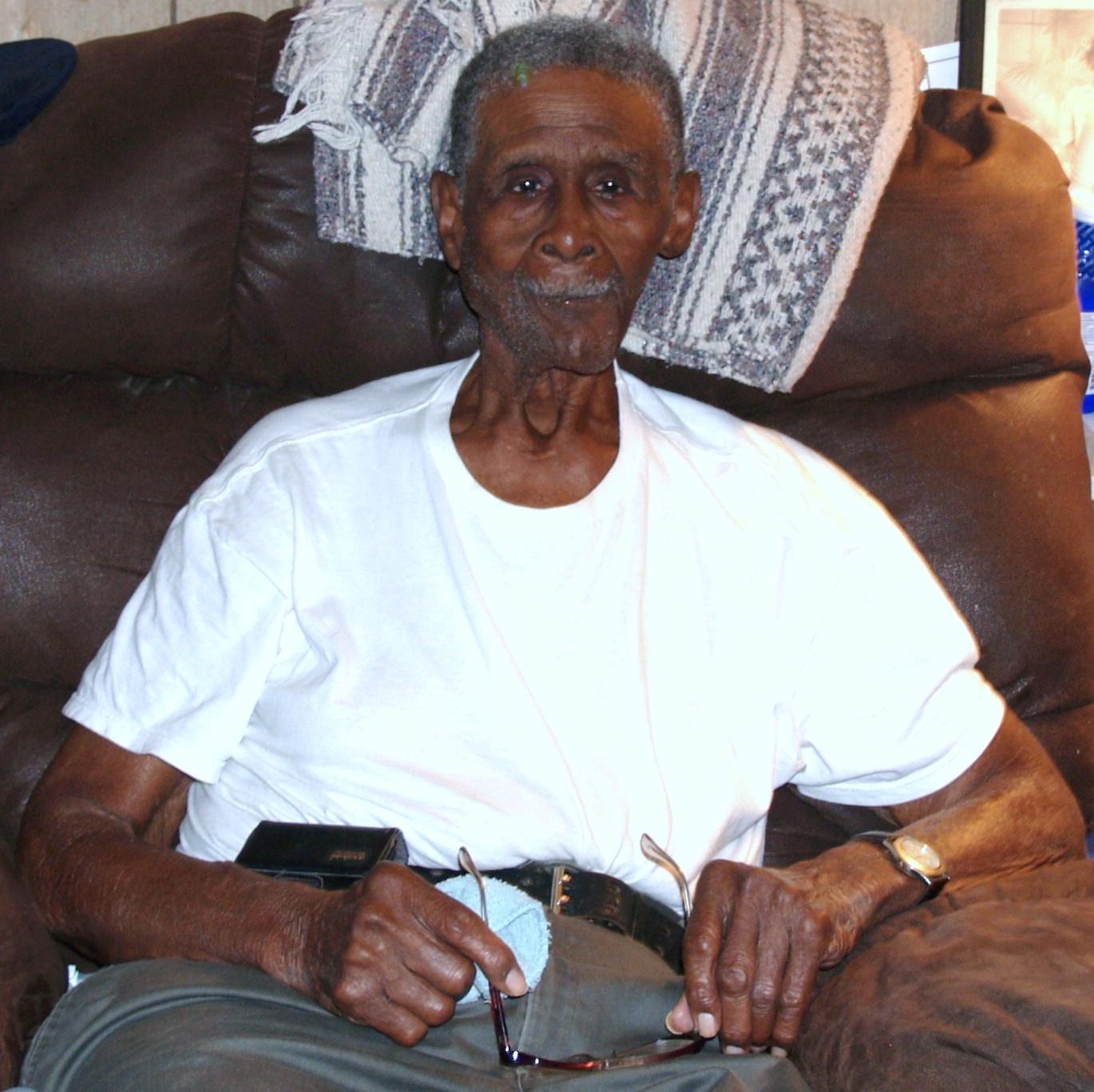 Samuel was born February 4, 1919 in Holey, Louisiana. Early in Ruben’s life, he decided to hobo his way to Lufkin on the Southern Pacific train in order to join the Diboll Negro League baseball team eventually known as “The Eagles.” Much of Samuel’s life revolves around baseball and the memories he has derived from those experiences. Samuel is one of three children. He had to quit school at the fourth grade level and help his mother support their family consisting of two other sisters and himself. He is a devoted grandfather to his grandchildren and a loving husband to his wife, Ruby. Samuel and his wife reside in Lufkin, where they have been since 1958. He is currently ninety-three years old and maintains good health.
Subject Guide for Ruben Samuel Interview (approx. 22 minutes) Introduction and family background – early life and family life in Holey, Louisiana – recollections of Holey as a community – baseball experience that brought Mr. Samuel to the Lufkin/Diboll area – the peanut patty story – the community garden – army experience and description of how the army built roads and bridges – explanation of the point system used to discharge him from the army — early experiences working to help family and quitting school at the fourth grade – places of employment where Mr. Samuel worked while in Diboll and Lufkin – Medals and recognitions received in the army – playing the white baseball team in Diboll – legacy and memory for the community – personal feelings regarding desegregation – brief discussion on marriages and children – advice Samuel would give a young Black man today.
Samuel was born February 4, 1919 in Holey, Louisiana. Early in Ruben’s life, he decided to hobo his way to Lufkin on the Southern Pacific train in order to join the Diboll Negro League baseball team eventually known as “The Eagles.” Much of Samuel’s life revolves around baseball and the memories he has derived from those experiences. Samuel is one of three children. He had to quit school at the fourth grade level and help his mother support their family consisting of two other sisters and himself. He is a devoted grandfather to his grandchildren and a loving husband to his wife, Ruby. Samuel and his wife reside in Lufkin, where they have been since 1958. He is currently ninety-three years old and maintains good health.
Subject Guide for Ruben Samuel Interview (approx. 22 minutes) Introduction and family background – early life and family life in Holey, Louisiana – recollections of Holey as a community – baseball experience that brought Mr. Samuel to the Lufkin/Diboll area – the peanut patty story – the community garden – army experience and description of how the army built roads and bridges – explanation of the point system used to discharge him from the army — early experiences working to help family and quitting school at the fourth grade – places of employment where Mr. Samuel worked while in Diboll and Lufkin – Medals and recognitions received in the army – playing the white baseball team in Diboll – legacy and memory for the community – personal feelings regarding desegregation – brief discussion on marriages and children – advice Samuel would give a young Black man today.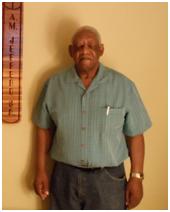 Algianon Moses Jeffero was born in New Willard, Texas in 1933 and moved to Huntsville as a child. After graduating from Sam Houston High School in 1952, Jeffero attended college at Prairie View A&M University, where he played on the National Championship football team. He majored in Vocational Agricultural. He soon found work with Diboll Independent School District as the head of the New Farmers of America organization from 1956-1967. Following this, Jeffero accepted a position as a Professional Scouter with the Boy Scouts of America, from which he retired in the mid-1990s.
Subject guide for Algianon Moses Jeffero interview (approx. 120 minutes): Introduction and family background-grandparents-sugarcane production-gristmill-uncles-boy soldiers in World War II-early life and family in Huntsville-shining shoes-newspaper route-community-newspaper route reprised-coffee shop-sawmill-cotton-raising hogs-borrowing money-salary-drugs-move to Lufkin-football-Littlefield-integration-Diboll-Boy Scouts-retirement-politics.
Algianon Moses Jeffero was born in New Willard, Texas in 1933 and moved to Huntsville as a child. After graduating from Sam Houston High School in 1952, Jeffero attended college at Prairie View A&M University, where he played on the National Championship football team. He majored in Vocational Agricultural. He soon found work with Diboll Independent School District as the head of the New Farmers of America organization from 1956-1967. Following this, Jeffero accepted a position as a Professional Scouter with the Boy Scouts of America, from which he retired in the mid-1990s.
Subject guide for Algianon Moses Jeffero interview (approx. 120 minutes): Introduction and family background-grandparents-sugarcane production-gristmill-uncles-boy soldiers in World War II-early life and family in Huntsville-shining shoes-newspaper route-community-newspaper route reprised-coffee shop-sawmill-cotton-raising hogs-borrowing money-salary-drugs-move to Lufkin-football-Littlefield-integration-Diboll-Boy Scouts-retirement-politics.